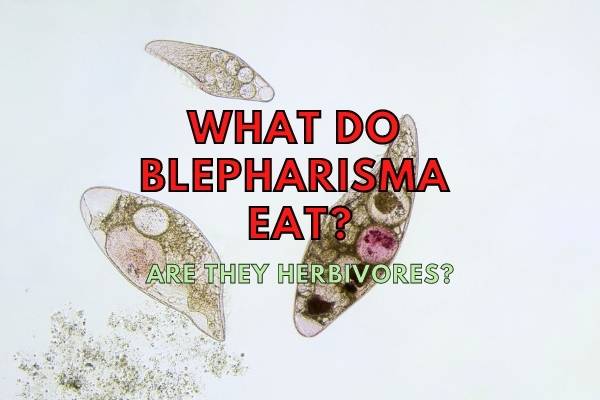Blepharisma are common ciliates belonging to the kingdom of protists that live in fresh and salt water. They are heterotrophic, which means that they cannot produce their own food and must instead rely on other organisms for sustenance.
The primary food source for Blepharisma is bacteria, although they will also consume algae and other microorganisms. The are heterotrophs and do not use photosynthesis. They are opportunistic feeders that take advantage of whatever food is available in their environment.
Blepharisma also play an important role in the decomposition of organic matter. By consuming organic particles in the water, they help to break down dead plants and animals into simpler molecules that can be used by plants to grow.
In this way, Blepharisma are an important part of the global carbon cycle.
Where do Blepharisma live?
Blepharisma live in salt- and freshwater environments such as the ocean, ponds, lakes, and swamps. They are mostly found in warmer climates and they thrive best at around 27 degrees Celsius (80F).
Primary Diet of the Blepharisma
Blepharisma are heterotrophs, feeding off of bacteria, yeast, and other microorganisms. Their diet also includes detritus, which is dead plant and animal matter.
Some of the most common food items eaten by Blepharisma are:
- Yeast
- Bacteria
- Algae
- Organic debris
- Mold
- Blepharisma (yes, they are cannibals!)
- Other protozoa such as Euglena or paramecium.
How do blepharisma eat?
Blepharisma are vacuole feeders. They filter out food particles, such as bacteria and yeast, from the water by surrounding it with parts of their body forming a vacuole that captures the microorganism or debris.

Are Blepharisma Autotrophic or Heterotrophic?
Blepharisma are heterotrophs because they eat other living things. They consume other organisms, including bacteria, yeast and other microorganisms.
They are not able to gain energy directly from the sun or synthesize their own organic molecules.
This is unlike some other protists like Euglena that are able to use the sun as an opportunistic energy source.
Are Blepharisma Carnivores, Herbivores or Omnivores?
Blepharisma are not really carnivores but bacterivores , fungivores and detritivores. They consume other organisms, including bacteria, yeast and other microorganisms, so you could call them bacterivores. They do not eat plants, fruits or vegetables.
Is a Blepharisma a Producer, Consumer or Decomposer?
Blepharisma are consumers because they eat other living things. Blepharisma are heterotrophs, which means that they eat other organisms.
Other protozoa like Euglena also have the ability to produce energy from the sun, but this is not the case for most blepharismas.
Blepharisma may also be considered decomposers when they eat dead organic matter such as plant and animal debris.
What Type of Consumer is a Blepharisma?
Blepharisma are secondary consumers because they eat other organisms, which, in turn, also eat other organisms (like when they eat other Blepharisma!). Generally, herbivores are primary consumers, omnivores secondary consumers and carnivores are tertiary consumers.
Can Blepharisma be Considered Decomposers?
Yes, they can in fact be classified partly as decomposers as they do eat debris of dying organic matter like plants. They decompose the debris to their fundamental constituents and are therefore proper partime decomposers.
Where are Blepharisma in the Food Chain?
Blepharisma are secondary consumers because they eat other organisms, which, in turn, also eat other organisms. Generally, herbivores are primary consumers, omnivores secondary consumers and carnivores are tertiary consumers.
Where are Blepharisma in the Food Chain?
Blepharisma are secondary consumers because they eat other organisms, which, in turn, also eat other organisms. Generally, herbivores are primary consumers, omnivores secondary consumers and carnivores are tertiary consumers.
What Eats Blepharisma?
Blepharisma are preyed upon by a wide variety of animals, including copepods, other protozoa, rotifers, nematodes, amoebae and ciliates.
Conclusion
In this blog post I have looked into the diet of a single-celled animal: Blepharisma!
Blepharisma are a group (genus) of microorganisms with many species that are found in the bodies of many different animals and even humans!
Blepharisma are heterotrophic, meaning that they do not photosynthesise, but instead they use organic material from their environment to produce their own food.
They are found in many different habitats, including fresh and salt water, soil, and even in the human digestive system.
Blepharisma are important for the growth of other organisms, and are often found in the gut of some animals as part of the normal gut flora.
If you are interested in how protozae or other microorganism obtain their energy, check out my posts on these topics!




